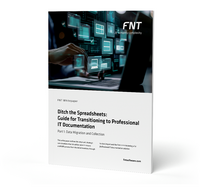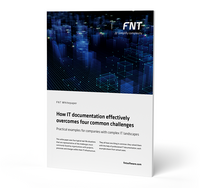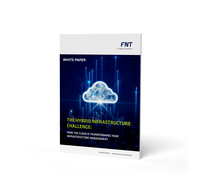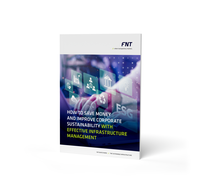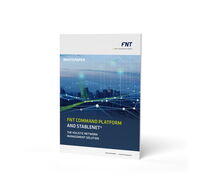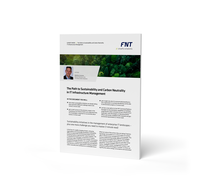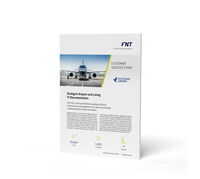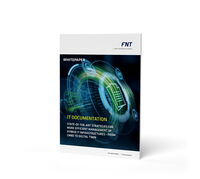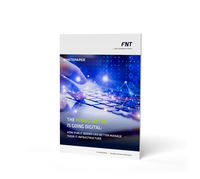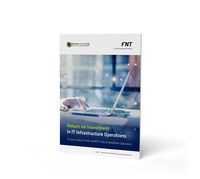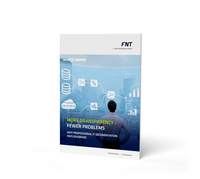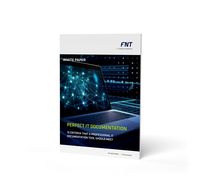FNT Software - Solutions for Enterprise IT
In the course of increasing digitization, IT infrastructures are not only becoming more extensive, but also more hybrid. It’s becoming more common for cloud services to complement traditional on-premises infrastructure in the company's own data center, which further increases complexity. At the same time, internal and external customers expect ever faster delivery of digital services. In this challenging environment, IT organizations are faced with the task of operating the IT and network infrastructure as efficiently as possible and providing the required services as quickly as possible - key to keeping customers satisfied.
These challenges can most easily be met with a complete overview of the IT and network infrastructure. Only then are IT organizations in a position to plan infrastructure changes or expansions sensibly, manage the infrastructure efficiently, and increase customer satisfaction through better service delivery.
-
What Makes FNT Software Solutions Different?
- Specially tailored software packages for specific use cases of IT organizations – regardless of industry
- Based on FNT Command, FNT's market-leading software for IT documentation and IT infrastructure management
- Standardized, fully configurable software solutions with extensive out-of-the-box functionality
- Scalable in terms of functionality
- Wide range of visualization and analysis functionalities
- Process management with workflow engine
- Open interfaces and integration options facilitate automation and data exchange
- Available as a subscription-based model: no investment is required, and no maintenance fees are incurred
FNT Solutions for Enterprise IT
Makes it possible to holistically design, roll out, and operate state-of-the-art infrastructures for central application operations. It helps to achieve greater operational efficiency by documenting and managing the complete applications infrastructure stack, from the physical level to virtualization levels, up to the application itself.
An enterprise-wide product, service, and resource catalog based on a best-practice methodology. This solution enables IT organizations to holistically design, define, manage, and operate products and digital services. It acts as the single system of record for services and lifecycle management, the heart of any service delivery platform.
Helps ensure fault-free global interconnectivity. It includes a central repository of all leased data carrier lines that provides oversight of long-distance networks. Comprehensive documentation of all connected endpoints, all associated contracts, and the relevant provider master data delivers maximum transparency.
Enables the management of network connectivity services both inside plant and throughout the campus. It includes a central repository that provides a complete inventory of all active and passive network resource data, including end-to-end connections. The solution provides the accurate as-is documentation needed to facilitate both new cable infrastructure rollouts and extensions of existing networks.
Enables IT organizations to holistically design, roll out, and operate state-of-the-art infrastructures for workplaces. This helps companies achieve greater operational efficiency in documenting and managing all workplace elements, from laptops and PCs/NCs to virtualized desktops, installed software, as well as the usual periphery elements.

Features and Functions (Click to expand)
- Dashboards and Reports: Configurable dashboards and reports provide information, make your team's performance transparent, improve and accelerate decisions.
- Integrated GIS Functionality In- and Outdoors: Network infrastructure is data enhanced with geoinformation to enable user to optimize its management inside, outside and between buildings.
- Definition of Self-Generated Reports: Custom database queries can be created and made available in the form of reports. Data can be accessed from your own Command database via a defined meta-schema. It is also possible to access external databases.
- Zone Management: Complex plant facilities are represented hierarchically, which includes campuses, plant buildings, floors, hall structures and rooms.
Additional benefits for data center managers
- Monitoring: Proactively review and evaluate infrastructure components in the data center to achieve greater control.
- 2D / 3D Footprint: Gain an overview of the actual and planned situation in the data center using spatial representations. Racks and devices can be explored in a photorealistic representation, including technical data. Existing and planned capacities can be quickly analyzed graphically.
- User Management & Role Permissions: View and access to the database can be controlled. By assigning rights and privileges, an authorization concept is implemented.
- Accessory Management: The Accessory Management module enables the management of individuals, groups, organizations, and contracts.
- Server Management: All aspects of modern server and storage infrastructures, as well as distributed systems, can be documented. The integrated planning function aids in the preparation and implementation of infrastructure changes.
- Service Asset Management: Transparent documentation and visualization of services and the underlying IT infrastructure. Individually editable representations allow for precise documentation and visual depiction of services.
- Software Management: Comprehensive documentation of all deployed and existing software applications within the company, including the necessary licenses. Provides complete transparency over IT costs and relationships within the organization.
- WAN/Management of External Provider Connection Offers: Transparent management of lines and services for wide area networks.
Additional benefits for data center managers
- Power Management + DC Cockpit (Space, Power, Cooling): Capture and manage power distribution systems, document and manage circuit breakers through a graphical or tabular view. Gain a complete overview of capacity and space utilization, as well as the climate situation across the entire data center or in detail for individual rooms.
- Asset & Order Management: IT assets can be efficiently managed and monitored throughout their entire lifecycle. Orders can be defined as sub-orders and assigned to various processing groups within the Order Management module. The resulting workflows map the entire process.
- Workflow/Work Order Management: Planned changes are issued as detailed work orders to internal teams or external suppliers. Custom forms can be created to support and structure any workflow. The new actual state can be directly documented in the infrastructure repository.
- Interface Management: Data from other systems can be collected, reconciled, and made available for use across various applications within the enterprise.
- ETL Tool: Exchange, reconcile, and import large, heterogeneous data sets.
- Cable Management: Documentation, planning, and management of the entire network infrastructure. Components can be easily identified, issues quickly resolved, and future upgrades simplified.
- Connection Matrix: Logical connections between the ports on the A and B sides of an object can be created in any combination. This includes the interconnection of at least two devices and the internal wiring of modular devices, considering their specific nomenclature rules for ports and slots.
- Management of Splices and Junctions: Efficient management of splicing and junction functions within the network.
- Visualization of Infrastructure Elements on Room and Site Plans: Integrated graphical representation of objects in cluster views for a simplified understanding of the relationships within extensive networks.
- Signal Management: Comprehensive end-to-end view of transport paths through the documentation of signal route paths in the context of device and personnel data and their services.
Additional benefits for data center managers
- Location Management: Monitor and record the location and operational status of devices.
- Planning function: Planned and actual states as well as work instructions can be created, and logs can be managed.
Further Downloads
Would you like to learn more about FNT's solutions for enterprise IT? The following assets might be interesting for you:


